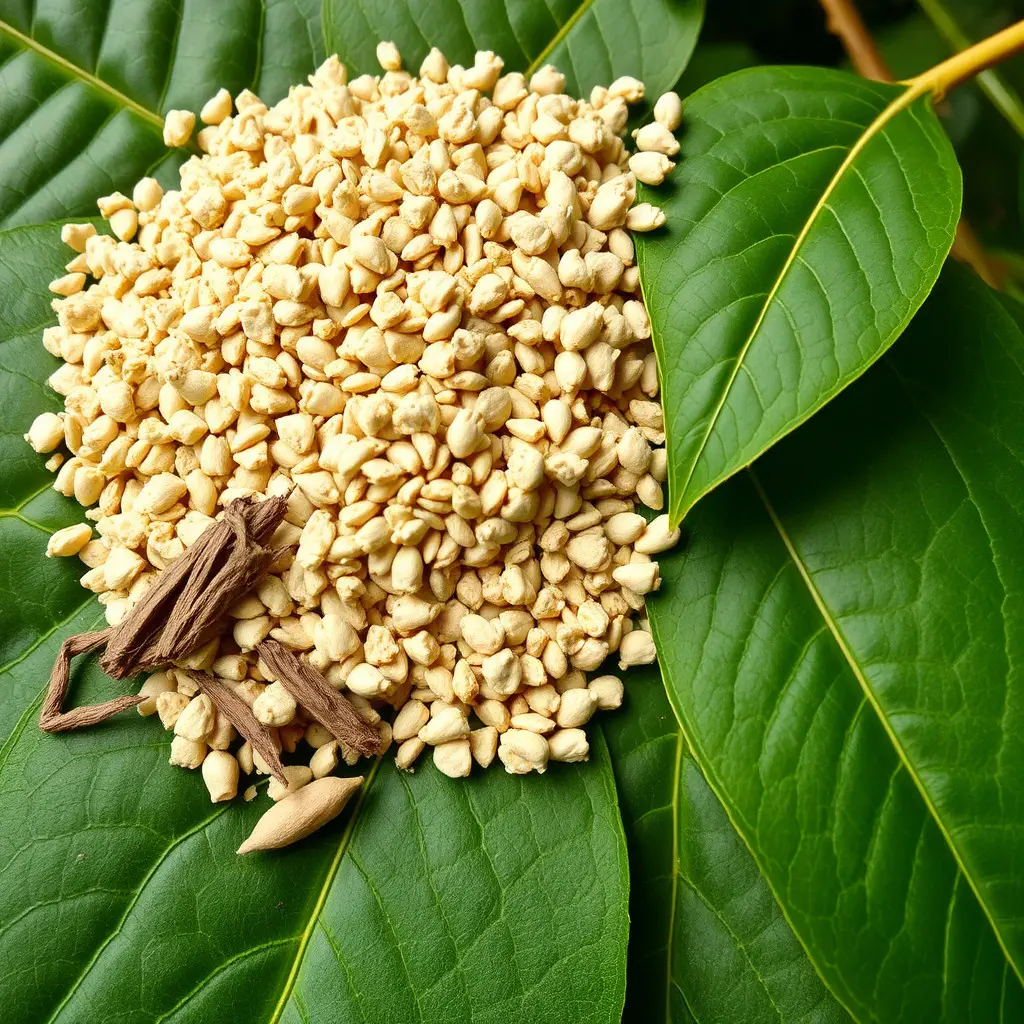Kratom, derived from a Southeast Asian tree, has gained attention for its role in managing opioid withdrawal symptoms by imitating opioid effects through its alkaloids, mitragynine and 7-hydroxymitragynine. These compounds help ease withdrawal-related pain, anxiety, and cravings by interacting with opioid receptors, providing a non-pharmaceutical alternative to traditional detox methods. Unlike historical remedies like blue lotus, which is used for its psychoactive effects in cultural ceremonies and contains alkaloids such as nuciferine and apomorphine, kratom offers a more targeted approach for withdrawal management. Blue lotus smoke can induce euphoria and sedation but poses challenges in detection due to low levels of certain compounds that may not trigger positive results on standard drug tests typically used for nicotine or cannabis. This contrasts with kratom, which does not interfere with drug tests. The discussion underscores kratom's potential as a controlled and discreet option for opioid withdrawal, while highlighting the limitations of current drug screening methods in detecting blue lotus use. It suggests that drug test protocols may require updates to accurately identify substances like blue lotus smoke, ensuring precise results in legal and workplace settings.
Kratom, a botanical substance derived from the leaves of Mitragyna speciosa, has emerged as a potential aid in managing the challenging symptoms associated with opioid withdrawal. This article delves into the efficacy of kratom in this context, examining its mechanisms alongside traditional detox methods such as those involving the blue lotus—historically revered for its psychoactive properties. As we explore the science and legal landscape surrounding kratom usage, particularly in the realm of detoxification, we also consider the implications for individuals subject to drug tests. Understanding the nuances of kratom’s role, its benefits, and its limitations is crucial for those navigating the path to recovery from opioid addiction.
- Understanding Kratom's Role in Mitigating Opioid Withdrawal Symptoms
- The Science Behind Kratom and Its Comparison to Traditional Detox Methods, Including the Blue Lotus
- Navigating Legal Considerations and Drug Testing Implications When Using Kratom for Opioid Withdrawal
Understanding Kratom's Role in Mitigating Opioid Withdrawal Symptoms

Kratom, a plant from Southeast Asia with the scientific name Mitragyna speciosa, has garnered attention in various discussions surrounding opioid use and withdrawal. Its leaves contain compounds that can interact with the body’s opioid receptors, potentially offering relief from withdrawal symptoms. For individuals transitioning off opioids, kratom may serve as a bridge due to its mitigating effects on the discomfort associated with opioid cessation. This is particularly relevant for those who are facing opioid addiction and are seeking alternatives to traditional medication-assisted treatment (MAT) options. The alkaloids present in kratom, such as mitragynine and 7-hydroxymitragynine, are believed to play a key role in this process by mimicking opioid effects without the same level of sedation or risk of dependency.
However, it’s crucial to approach the use of kratom with caution. The substance is not without its controversies and regulatory complexities; its legal status varies across different jurisdictions. Moreover, while kratom may be a potential aid in managing withdrawal symptoms, it should be considered as a complementary measure rather than a definitive solution. Prospective users must also consider the implications of drug testing, as kratom can trigger a positive result on blue lotus drug tests due to its similar alkaloid profile. It’s essential for individuals seeking relief from opioid withdrawal to consult with healthcare professionals who can provide guidance tailored to their unique circumstances and legal requirements. This ensures that any treatment or alternative therapy, including the use of kratom, is pursued in a safe, informed, and legally compliant manner.
The Science Behind Kratom and Its Comparison to Traditional Detox Methods, Including the Blue Lotus

Kratom, a tropical evergreen tree native to Southeast Asia, has garnered attention in discussions surrounding opioid withdrawal symptom management. The mitragynine and 7-hydroxymitragynine alkaloids found within kratom leaves have been observed to exhibit effects similar to opioids, which can help alleviate withdrawal symptoms such as pain, anxiety, and cravings. Studies indicate that kratom may modulate the opioid receptors in a manner that can mitigate some of the discomforts associated with opioid cessation. Unlike traditional detox methods that often rely on medication to manage withdrawal symptoms, kratom offers an alternative approach. This distinction is particularly relevant for individuals who may not be candidates for certain pharmaceutical interventions due to contraindications or adverse effects.
In comparison to the historical remedy of blue lotus, which has been used for centuries in various cultural practices including as a ceremonial drug, kratom’s alkaloid profile and interaction with opioid receptors provide a more targeted approach to managing withdrawal symptoms. The blue lotus, often consumed through smoke or ingestion, can induce euphoria, sedation, and other psychoactive effects due to its alkaloids like nuciferine and apomorphine. While it has been used in detox protocols, the variability in its effects and the potential for misuse limit its clinical application. Conversely, kratom’s selective action on specific opioid receptors may offer a more precise tool for managing withdrawal symptoms without the need for drug tests to detect its presence, unlike some traditional detox medications that can appear positive on a drug test and potentially lead to complications in legal or employment contexts.
Navigating Legal Considerations and Drug Testing Implications When Using Kratom for Opioid Withdrawal

Kratom’s potential as a mitigating agent for opioid withdrawal symptoms presents a compelling alternative to traditional detox methods, with its effects and mechanisms compared directly to those of the blue lotus. As this discussion has highlighted, while navigating the legal landscape and drug test implications is paramount, the scientific evidence supporting kratom’s role in alleviating withdrawal discomfort cannot be overlooked. It offers a promising avenue for individuals seeking relief during the challenging process of detoxification. Prospective users should, however, approach its use with caution, mindful of legal restrictions and potential drug test interactions. As research continues to evolve, so too will our understanding of kratom’s role in the broader context of opioid cessation.






